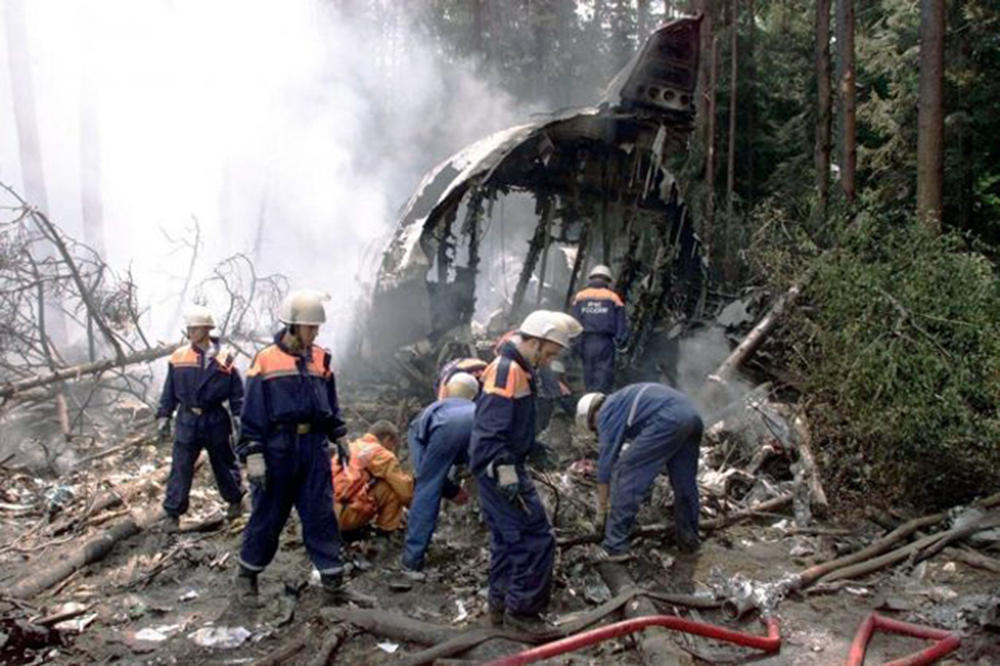Country
Crash of an Ilyushin II-76MD near Kerman: 275 killed
Date & Time:
Feb 19, 2003 at 1724 LT
Registration:
15-2280
Survivors:
No
Schedule:
Zahedan - Kerman
MSN:
00634 71155
YOM:
1986
Crew on board:
18
Crew fatalities:
Pax on board:
257
Pax fatalities:
Other fatalities:
Total fatalities:
275
Circumstances:
The four engine aircraft departed Zahedan on a flight to Kerman, carrying 257 passengers and a crew of 18, most of them members of the Revolutionary Guards. On board were also several high ranking officers who just conducted a visit of the province of Zahedan, taking part to a narcotic control program. While descending to Kerman Airport by night, the crew encountered poor weather conditions with heavy snow falls and strong winds. On approach, the aircraft struck the slope of Mt Sirach located 32 km from the airport. First rescuers arrived on the scene the next morning. The wreckage was found about 100 metres below the summit and all 275 occupants have been killed.
Probable cause:
Controlled flight into terrain after the crew continued the descent below the MDA in poor visibility due to the night and bad weather conditions. For unknown reasons, the crew started the descent prematurely.
Crash of an Ilyushin II-76TD in Baucau: 6 killed
Date & Time:
Jan 31, 2003 at 1521 LT
Registration:
RDPL-34141
Survivors:
No
Schedule:
Macau - Baucau
MSN:
00534 65941
YOM:
1985
Crew on board:
4
Crew fatalities:
Pax on board:
2
Pax fatalities:
Other fatalities:
Total fatalities:
6
Aircraft flight hours:
2349
Aircraft flight cycles:
1400
Circumstances:
Carrying 31 tons of telecommunications equipments for a Portuguese telephone company, the aircraft departed Macau to Baucau with two passengers and four crew members. On approach, the aircraft impacted terrain near Caicido village during a landing approach, about 1 NM (1.87 km) to the northwest of Cakung Airport, Baucau, Timor-Leste. The pilot in command was the handling pilot during the descent and approaches at Baucau. The aircraft was destroyed by impact forces and a severe post-impact fire, and the six occupants were fatally injured. The occupants included the flight crew, which comprised the pilot in command, the copilot, the flight navigator and the flight engineer, and two loadmasters who did not form part of the flight crew. At the time of the occurrence, there was low cloud near the aerodrome.2 Witnesses at the aerodrome estimated the cloud base to be about 1,000 ft (305 m) above ground level, and visibility to be about 1,500 m (0.8 NM). Before the aircraft’s departure from Macau, the flight crew was provided with notices to airmen (NOTAMs) and weather forecast information for the planned flight. The weather information provided to the flight crew did not include a terminal aerodrome forecast (TAF), or an aviation routine weather report (METAR) for Baucau. Those weather forecasts were not produced for Baucau.
Probable cause:
The following findings were identified:
Air Traffic Services:
1. ATS was not available at Baucau at the time of the occurrence.
2. There was no procedure in place to provide flight crews of aircraft engaged in non-UN operations with an altimeter subscale setting for Baucau at the time of the occurrence.
Organisational factors:
1. Neither the Lao-based company, nor the Cambodian-based company, sought the consent for the proposed sublease, dated 18 November 2002, and accordingly the inferred sublease had not been finalised.
2. The Cambodian-based company was not the operator of the aircraft for the occurrence flight.
3. The Lao PDR was the State of Registry and State of the Operator.
4. The Lao DCA was responsible for the continued surveillance of the operator to ensure that the required standards of operation were maintained.
5. The operator provided flight crews with inflight CFIT avoidance procedures in its operations manual.
CFIT risk exposure:
1. The planned flight from Macau to Baucau was exposed to moderate risk of a CFIT event, based on historical CFIT data and the Transport Canada simple method of risk analysis.
2. The destination risk factors, type of operation, area of operation, weather conditions, and flight crew non-compliance with published procedures increased the CFIT risk exposure of the planned flight to an above-average level.
3. The consequences of the accident were catastrophic and resulted in loss of human life and damage to property and the environment.
4. Those catastrophic consequences resulted from the flight crew’s disregard of established procedures; that disregard bypassed all the safety criteria and inbuilt risk treatments in the design of those procedures and steadily increased the CFIT risk exposure to an extreme level during the latter stages of the flight.
Significant factors:
1. The flight crew did not comply the published non-precision instrument approach and/or missed approach procedures at Baucau during flight in instrument meteorological conditions.
2. The flight crew conducted user-defined non-precision instrument approaches to runway 14 at Baucau during flight in instrument meteorological conditions.
3. The pilot in command permitted the aircraft to descend below the MDA(H) published on both the Jeppesen and CAD runway 14 instrument approach charts during flight in instrument meteorological conditions.
4. The flight crew did not recognise the increased likelihood and therefore risk of CFIT.
5. The flight crew did not recognise or treat that risk in a timely manner.
Air Traffic Services:
1. ATS was not available at Baucau at the time of the occurrence.
2. There was no procedure in place to provide flight crews of aircraft engaged in non-UN operations with an altimeter subscale setting for Baucau at the time of the occurrence.
Organisational factors:
1. Neither the Lao-based company, nor the Cambodian-based company, sought the consent for the proposed sublease, dated 18 November 2002, and accordingly the inferred sublease had not been finalised.
2. The Cambodian-based company was not the operator of the aircraft for the occurrence flight.
3. The Lao PDR was the State of Registry and State of the Operator.
4. The Lao DCA was responsible for the continued surveillance of the operator to ensure that the required standards of operation were maintained.
5. The operator provided flight crews with inflight CFIT avoidance procedures in its operations manual.
CFIT risk exposure:
1. The planned flight from Macau to Baucau was exposed to moderate risk of a CFIT event, based on historical CFIT data and the Transport Canada simple method of risk analysis.
2. The destination risk factors, type of operation, area of operation, weather conditions, and flight crew non-compliance with published procedures increased the CFIT risk exposure of the planned flight to an above-average level.
3. The consequences of the accident were catastrophic and resulted in loss of human life and damage to property and the environment.
4. Those catastrophic consequences resulted from the flight crew’s disregard of established procedures; that disregard bypassed all the safety criteria and inbuilt risk treatments in the design of those procedures and steadily increased the CFIT risk exposure to an extreme level during the latter stages of the flight.
Significant factors:
1. The flight crew did not comply the published non-precision instrument approach and/or missed approach procedures at Baucau during flight in instrument meteorological conditions.
2. The flight crew conducted user-defined non-precision instrument approaches to runway 14 at Baucau during flight in instrument meteorological conditions.
3. The pilot in command permitted the aircraft to descend below the MDA(H) published on both the Jeppesen and CAD runway 14 instrument approach charts during flight in instrument meteorological conditions.
4. The flight crew did not recognise the increased likelihood and therefore risk of CFIT.
5. The flight crew did not recognise or treat that risk in a timely manner.
Final Report:
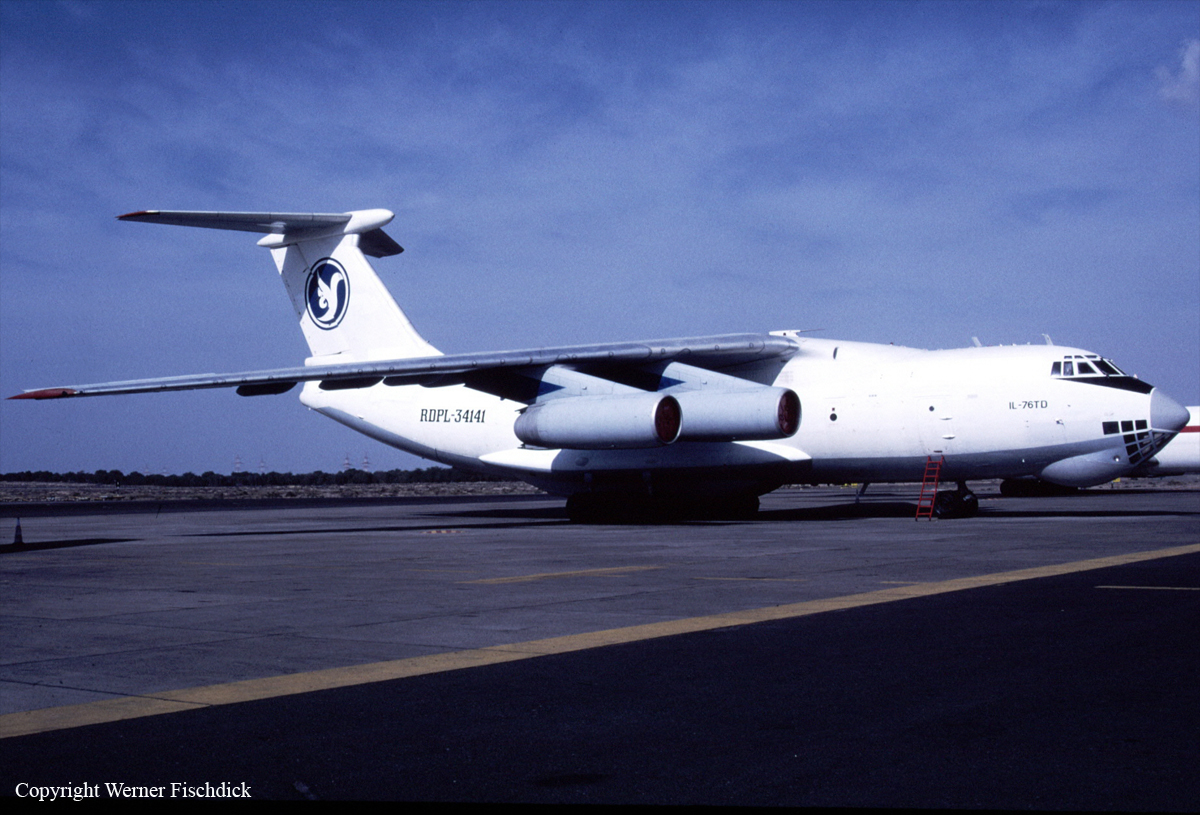

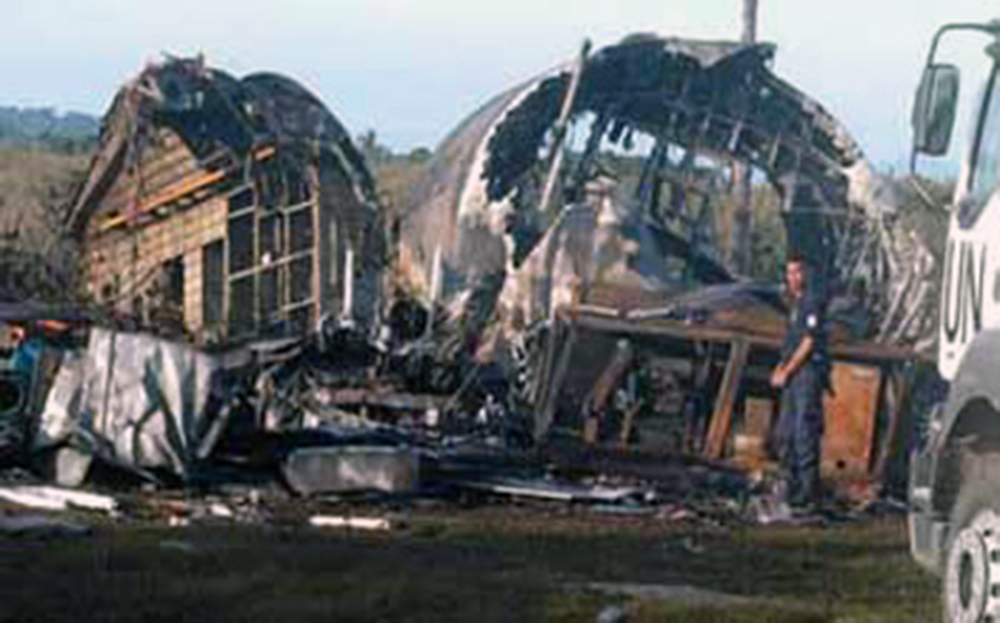
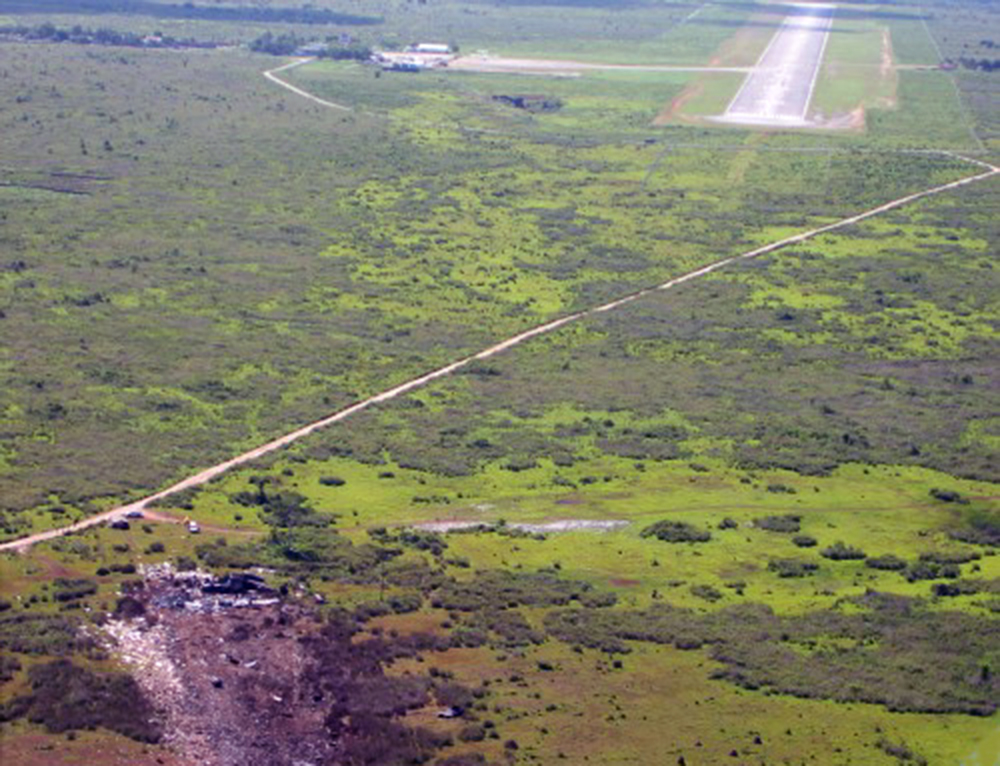
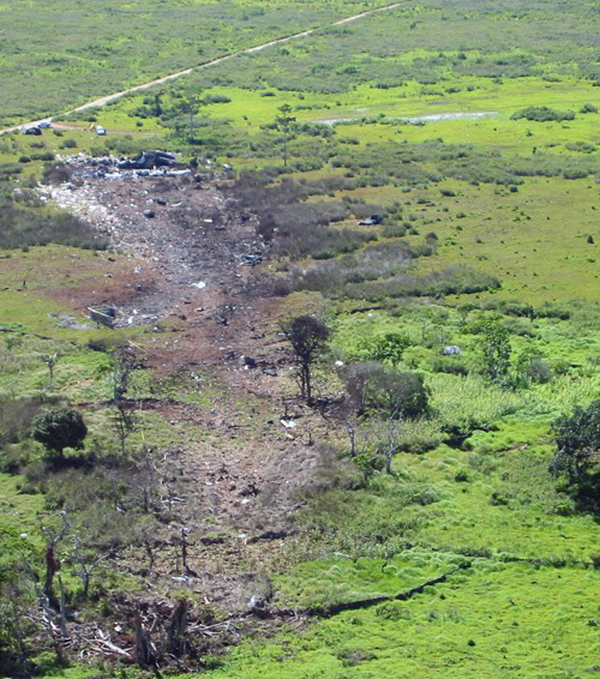
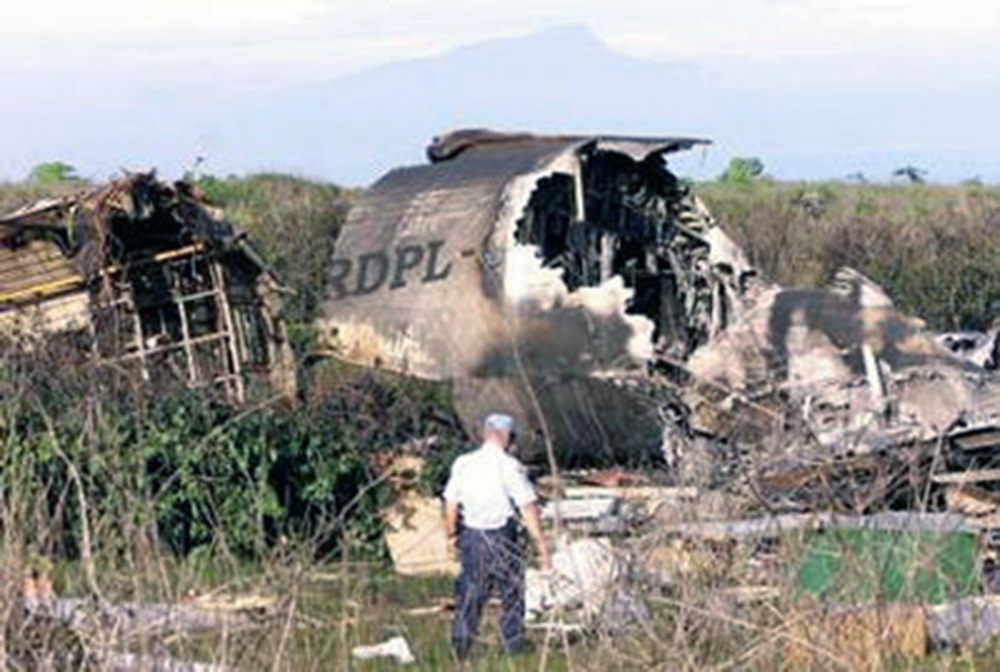
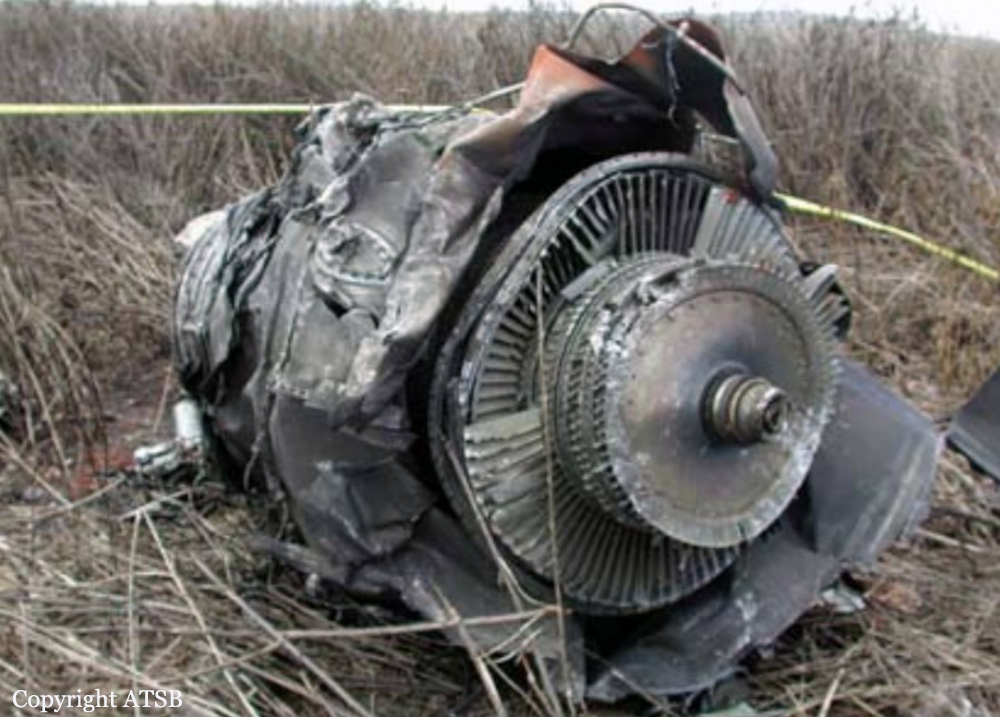

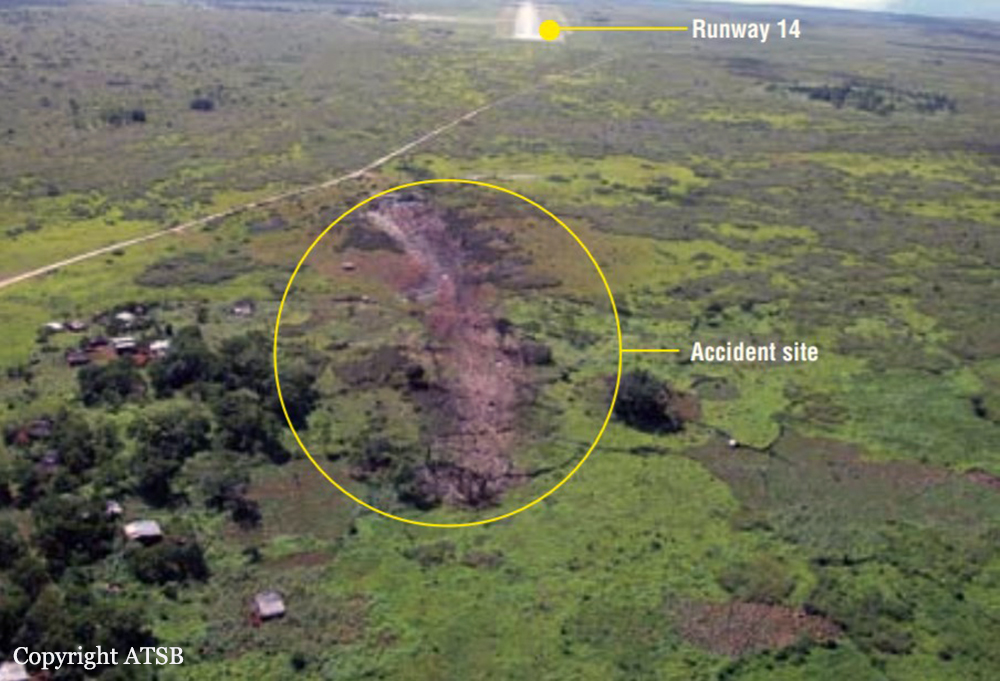


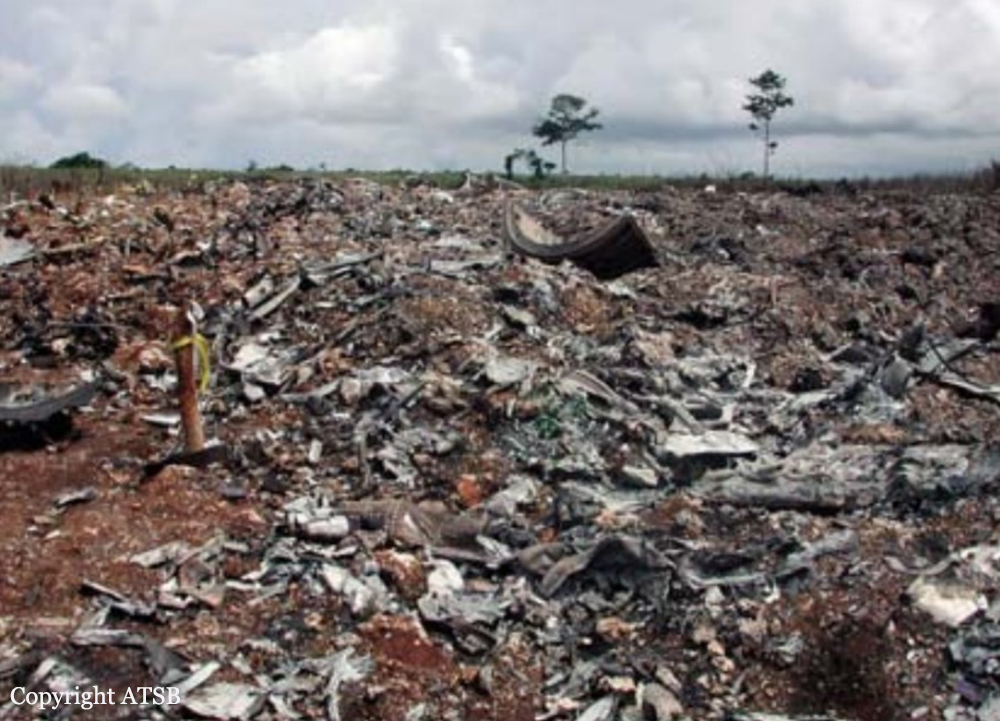
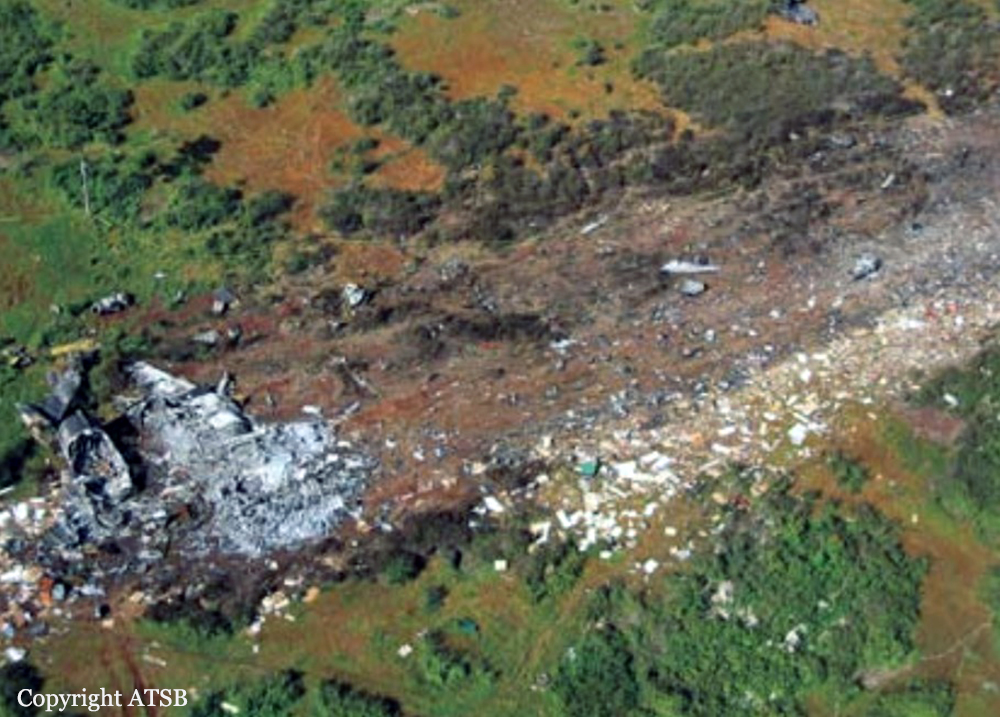
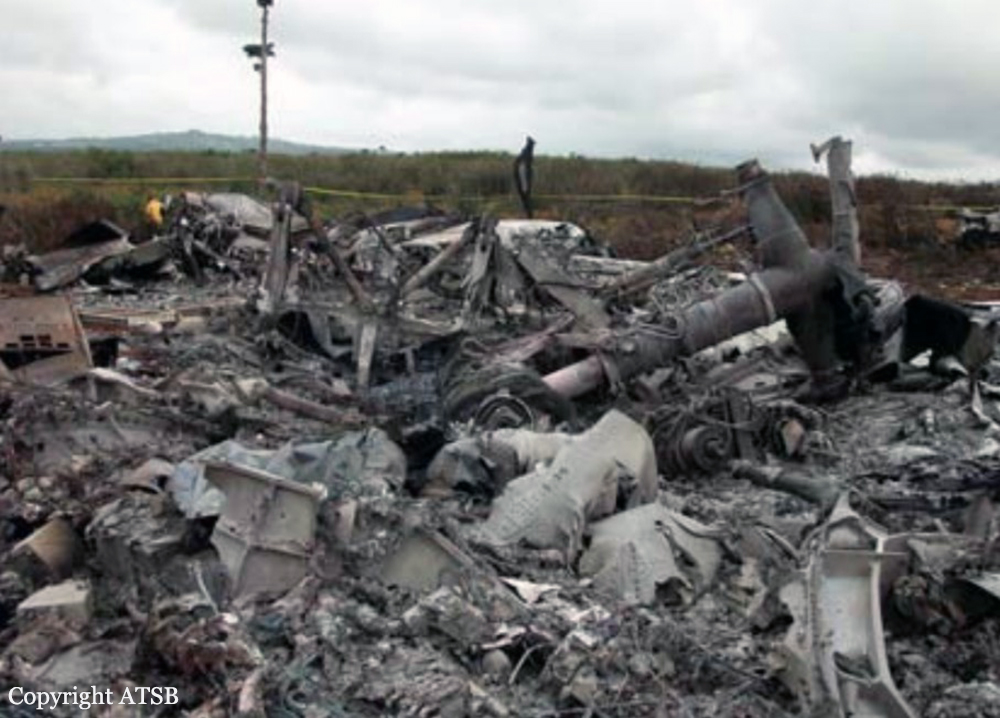
Crash of an Ilyushin II-76MD in Mashhad
Date & Time:
Feb 24, 2002
Registration:
15-2281
Survivors:
Yes
Schedule:
Mashhad - Tehran
MSN:
0073475236
YOM:
1987
Crew on board:
8
Crew fatalities:
Pax on board:
222
Pax fatalities:
Other fatalities:
Total fatalities:
0
Circumstances:
Few minutes after takeoff from Mashhad Airport, while flying at FL230 about 80 km from his departure point, the crew encountered technical problems when the autopilot system disengaged and the engine n°4 caught fire. The crew elected to extinguish the fire but without success and was cleared to return to Mashhad for an emergency landing. The fire spread to the right wing and the engine n°4 detached. Nevertheless, the crew was able to land safely at Mashhad Airport 24 minutes later and stopped the airplane on the runway. All 230 occupants escaped uninjured while the aircraft was partially destroyed after the right wing broke off and fell on the ground.
Probable cause:
Fire on engine n°4 for unknown reasons.
Crash of an Ilyushin II-76TD in Novaya Inya: 18 killed
Date & Time:
Dec 2, 2001
Registration:
RA-76839
Survivors:
No
Schedule:
Moscow – Bratsk – Petropavlovsk-Kamchatsky
MSN:
10234 11375
YOM:
1992
Flight number:
9064
Crew on board:
9
Crew fatalities:
Pax on board:
9
Pax fatalities:
Other fatalities:
Total fatalities:
18
Circumstances:
The aircraft departed Moscow on a cargo flight to Petropavlovsk-Kamchatsky with an intermediate stop in Bratsk, carrying nine passengers, nine crew members and a load of 36 tons of cargo including one aircraft engine and constructions materials. While cruising at an altitude of 9,600 metres, the crew declared an emergency and informed ATC about an in-flight fire. The crew initiated an emergency descent when, at an altitude of 7,000 metres, the aircraft broke into three and crashed in a wooded area located in Novaya Inya. The aircraft was totally destroyed and all 18 occupants were killed.
Probable cause:
In-flight fire for unknown reasons.

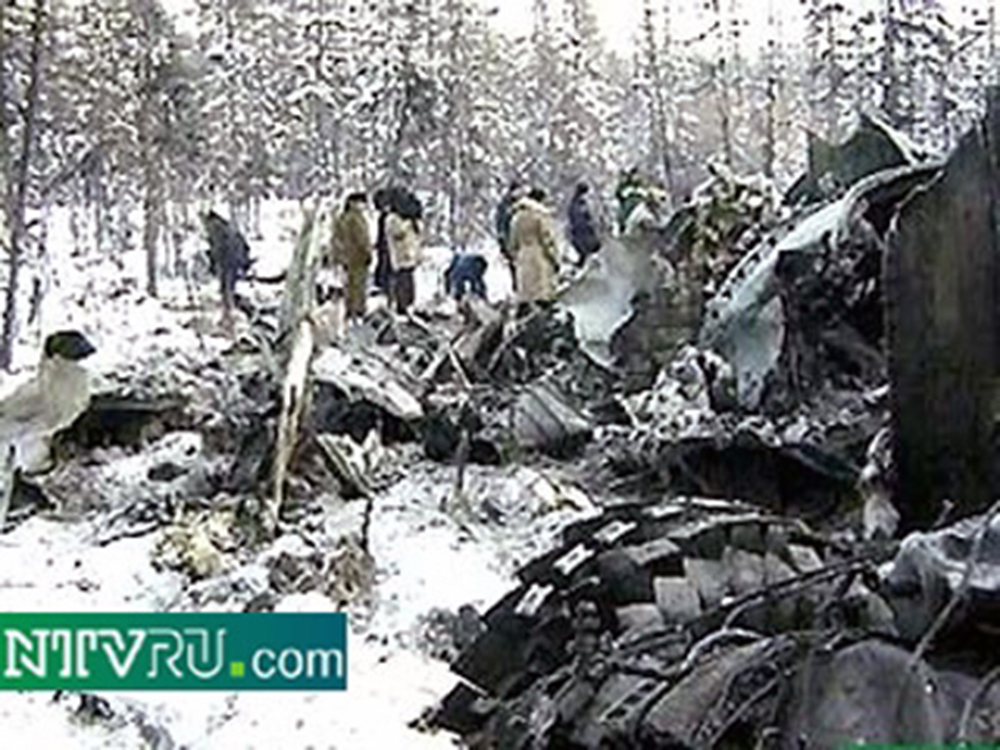
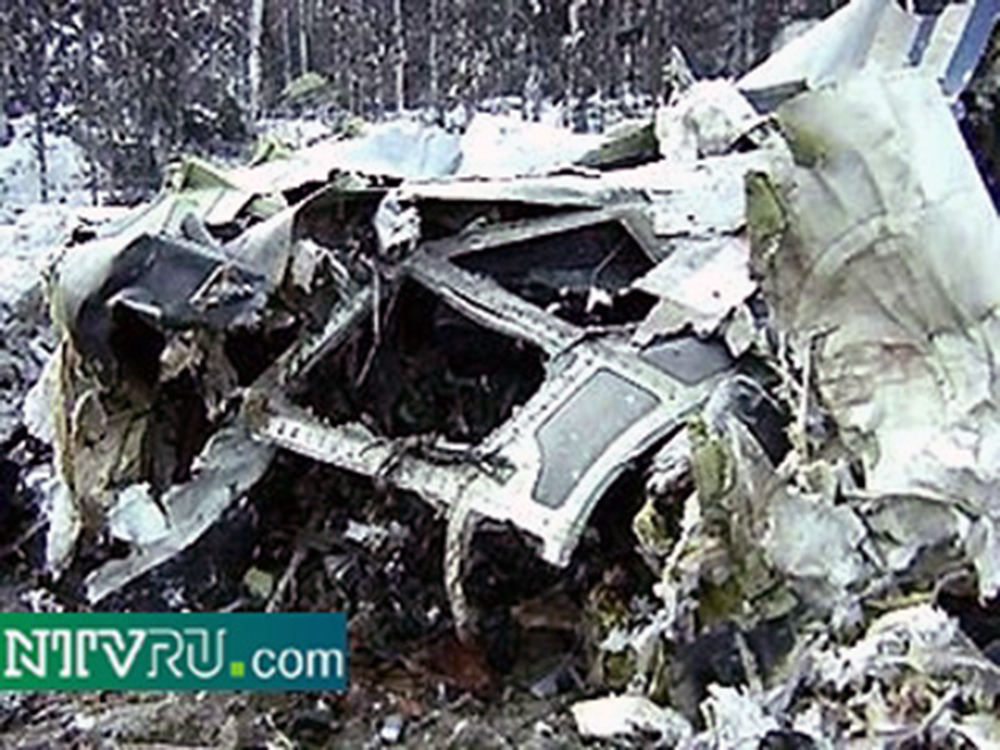
Crash of an Ilyushin II-76MD in Moscow: 10 killed
Date & Time:
Jul 14, 2001 at 0853 LT
Registration:
RA-76588
Survivors:
No
Schedule:
Moscow – Norilsk – Bratsk – Taiyuan
MSN:
00434 51530
YOM:
1984
Flight number:
RUR9633
Crew on board:
8
Crew fatalities:
Pax on board:
2
Pax fatalities:
Other fatalities:
Total fatalities:
10
Aircraft flight hours:
3523
Aircraft flight cycles:
1831
Circumstances:
The aircraft was engaged in a cargo flight from Moscow to Taiyuan, China, with intermediate stops in Norilsk and Bratsk, carrying two passengers, eight crew members and a load of 40,2 tons of construction materials. Due to foggy conditions, the horizontal visibility was reduced to 500-900 metres and the vertical visibility was estimated to be 70-80 metres. Following a takeoff roll of about 2,700 metres, the captain started the rotation at a speed of 290 km/h (about 25 km/h above the recommended speed). At a height of about 10 metres, the pilot-in-command started a turn to the right of 7° in order to compensate a deviation to the left during the takeoff roll. At a height of 23-24 metres, the stabilizers' position changed from -5,4° to -3,9° and the aircraft started to lose altitude. One second prior to impact, the elevator were in a 11-12° pitch angle and at a height of 20-21 metres, both right engines n°3 and 4 collided with trees at a distance of 930 metres from the runway end and 47 metres to the right of its extended centerline. Upon impact, both engines were torn off and the aircraft crashed in a wooded area located 1,460 metres past the runway end, bursting into flames. The aircraft was totally destroyed and all 10 occupants were killed.
Probable cause:
The following contributing factors were identified:
- A series of negligences was noted in the operations of the company and the maintenance of the airplane,
- The flight was not properly prepared and the total weight of the aircraft was well above the MTOW,
- Due to the combination of the following factors, the pilots did not take the corrective actions to maintain a good climb path:
- Lack of seriousness and lack of documentation control during cargo loading at Chkalovsky Airport,
- Lack of rigor and non-compliance with standard operating procedures regarding the pre-takeoff check of the cargo, which led the ground personnel to load cargo with a total weight in excess of 13,6 to 14 tons,
- At takeoff, the total weight of the aircraft was estimated to be 204 tons while it was certified for a maximum weight of 191.9 tons taking into account all factors at the time of the accident,
- All crew members were unable to identify in due time the successive errors made by the captain (pilot-in-command), among others the stabilizers that were prematurely positioned in an angle of -3.9 ° while the trailing edge flaps were retracted, causing the lift to be insufficient,
- The coordination within the flight crew was ineffective and the copilot and the navigator did not pay sufficient attention to the altitude of the aircraft through flight conditions in reduced visibility,
- Lack of visibility caused by foggy conditions which did not allow the flight crew to distinguish in time the obstacles located past the runway end,
- As a result of this accident, the operator certificate was revoked.
- A series of negligences was noted in the operations of the company and the maintenance of the airplane,
- The flight was not properly prepared and the total weight of the aircraft was well above the MTOW,
- Due to the combination of the following factors, the pilots did not take the corrective actions to maintain a good climb path:
- Lack of seriousness and lack of documentation control during cargo loading at Chkalovsky Airport,
- Lack of rigor and non-compliance with standard operating procedures regarding the pre-takeoff check of the cargo, which led the ground personnel to load cargo with a total weight in excess of 13,6 to 14 tons,
- At takeoff, the total weight of the aircraft was estimated to be 204 tons while it was certified for a maximum weight of 191.9 tons taking into account all factors at the time of the accident,
- All crew members were unable to identify in due time the successive errors made by the captain (pilot-in-command), among others the stabilizers that were prematurely positioned in an angle of -3.9 ° while the trailing edge flaps were retracted, causing the lift to be insufficient,
- The coordination within the flight crew was ineffective and the copilot and the navigator did not pay sufficient attention to the altitude of the aircraft through flight conditions in reduced visibility,
- Lack of visibility caused by foggy conditions which did not allow the flight crew to distinguish in time the obstacles located past the runway end,
- As a result of this accident, the operator certificate was revoked.

